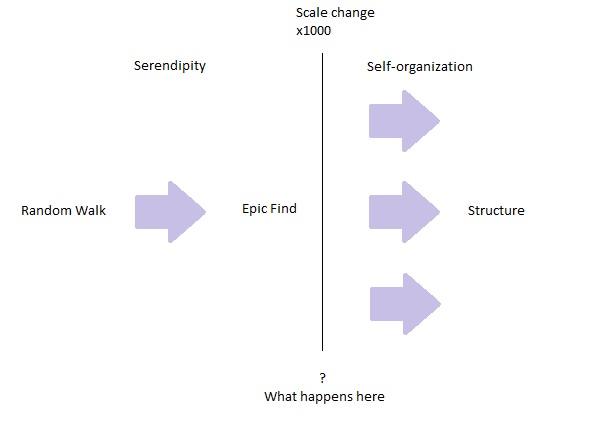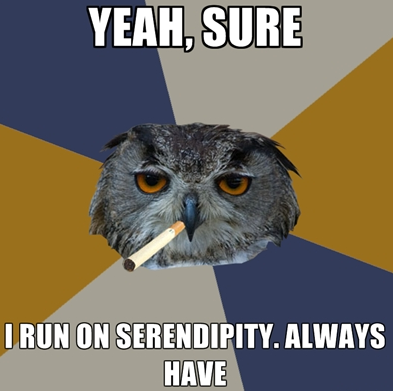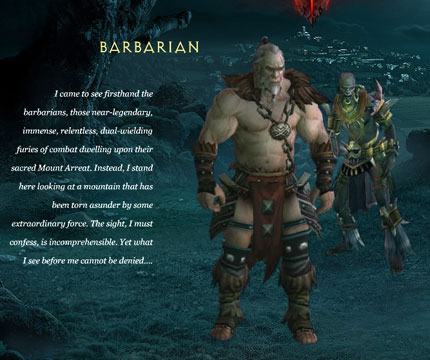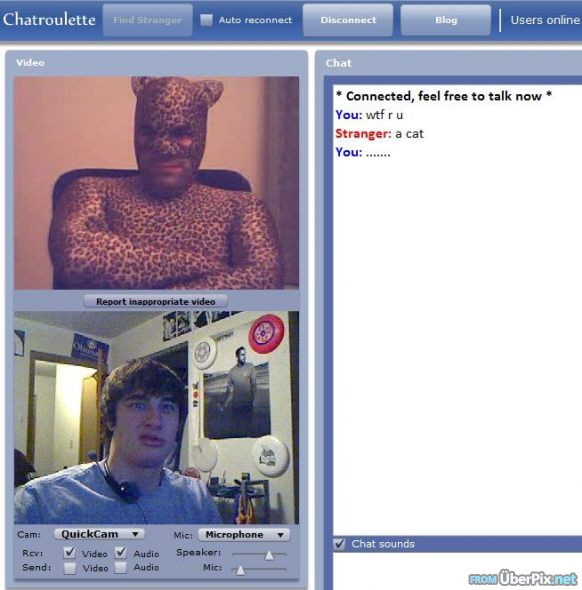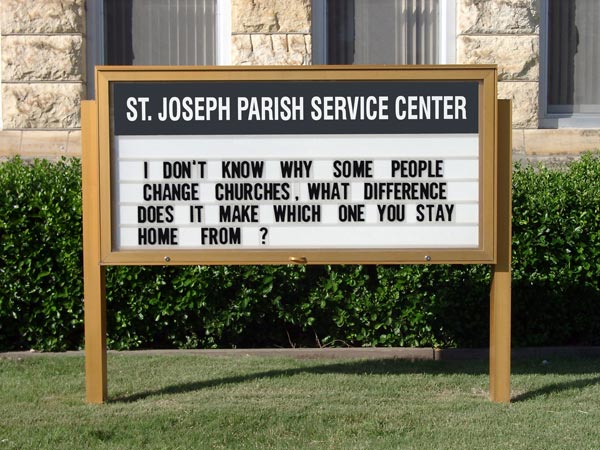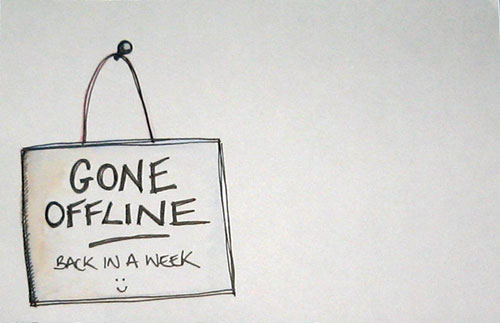- Serendipity entails will and drive
- Serendipity means exposure to the different and the foreign
- Serendipity delivers feedback efficiently
- The first point stems from the natural realization that all of this, for us at least, started in the African Savannah. I've already blogged about the Move, Meet, Mate trio. The tribes that didn't move throughout the Savannah, the natural travelers, didn't end up meeting any new mates, and eventually enriching their own genome through reproduction or mating. These aren't here today to tell their story. What comes before the essential Move part however is what interests me here. Why would someone move in the first place ? Leave their comfort zone ? What gets you out of your house ? On the negative side : Boredom, solitude, fear of isolation. On the positive side : Curiosity, lust. On the negative side, you're escaping something. On the positive side, you're in for a conquest. And that is the kind of feeling that fuels the longest strolls and excursions. Somewhere, up there in your mind, curiosity, lust - in a word desiring the unknown - tinkers with your will and drive. That mysterious void sucks you in. And you jump willingly ... Welcome to the doors of the kingdom of Serendipe
 So serendipity means you already have what it takes to get there : To the meet and mate part. Meet is the exposure to the different and the foreign. In a way, it's the very accomplishment of serendipity.
So serendipity means you already have what it takes to get there : To the meet and mate part. Meet is the exposure to the different and the foreign. In a way, it's the very accomplishment of serendipity.- And what about feedback ? How does serendipity make way for the mechanism that enhances our organizations and ensures their evolution ? Well, here's where another reflection kicks in : I see swarm theory as an illustration of chaos theory. Understand chaos theory as the butterfly effect and the impossibility of predicting the outcome of a system sensitive to initial conditions (one example is the weather, sensitive to the flap of the wings of the smallest butterfly). Understand swarm theory as the wisdom of the crowd (swarms of individually stupid ants). What links both ? Each member of the swarm is somewhat predictable. The swarm isn't. It has proven to be hugely adapting and infinitely modular. It is chaos ... deterministic but organized and damn efficient. Feedback definitely helps the transition from a bunch of stupid ants to an organized group. But does serendipity really allow feedback ? Serendipity is bumping into useful stuff while wandering aimlessly ... Stupid creatures wander aimlessly. Then they bump into other stupid creatures that tells them, using, say, pheromones, that the food that'll allow them to survive, is right behind that corner there
So starting from the end : Self-organization does not occur if members and their ideas and actions don't mate. That does'nt happen if they don't meet. And this certianly wouldn't occur if they didn't move in the first place. So it's move, meet, mate. Put in an equation : Motion + Choc = Life. Motion is movement, choc is meeting and life is mating. Everything about evolution has made sure we move, meet and mate. As TED's Daniel Wolpert puts it, everything in our organism is there to allow movement. The story of evolution is one that aims at guaranteeing movement and collision - that's the attraction part of love in Helen Fisher's TED talk - in order for us to mate. The move, meet, mate trio mirrors Fisher's trio : Sexual attractiveness, romantic love, attachment.
Figure 1
This Harvard Business Review article illustrates it beautifully too : What to do when you don't know what to do ? Listen to your most essential reflex : Move. Just move. But we're not only looking at the scale of the individual. We're taking groups into consideration here. And more and more, Serendipity is looking like the first step towards self-organization today. Where ? Mainly in the design field. A fun and chaotic environment like the one Willis Whitney created in GE's R&D offices is one that does not allow for isolation. That's certainly where the magic of open spaces and co-working spaces comes from : Collision. Serendipity raises the odds of people colliding. Collision itself, then, raises the odds of serendipity and ultimately the generation of purpose in a group, the meeting of people, the elaboration of principles and the continual move from inspiration to organization to action. All is said. And a door opens. Now that we got a glimpse at the magic formula serendipity fuels, can we engineer it just as Willis Whitney did ?
Second life and its souped-up successors will become laboratories of sociology, experimental psychology, and their successor disciplines yet to be invented and named. Whole economies, ecologies, and perhaps personalities will exist nowhere other than in virtual space
- Imagine how video games could use behavioral economics to determine the right amount of pain a player would be satisfied with : How much pain and damage does a player need to inflict to the enemy before he's satisfied and contempt enough to give the final blow with a smile ? This can be studied across gender, age and ethnicity, but it can also be based on the type of character involved in the game itself : Is a player as satisfied after hitting an elf or a sorcerer 5 times and killing them or does each of them need to be hit a specific and distinct number of times before he's satisfied ?
- Imagine now how video games dynamic could be of use for real-life planning. The way users organize on Diablo 3 and World of Warcraft is very revealing. The optimal number of members in a guild could be of use in studying the relevance of the Dunbar number in focused collaborations.
Louis Pasteur observed, “In the fields of observation chance favors only the prepared mind.” Merton believed that serendipity emerged both from a prepared mind and from circumstances and structures conducive to discovery. In “The Travels and Adventures of Serendipity”, he and Barber explore discovery in a General Electric laboratory under the leadership of Willis Whitney, who encouraged a work environment that focused as much on fun as it did on discovery. A healthy blend of anarchy and structure was necessary for discovery, and over-planning was anathema as “the policy of leaving nothing to chance is inherently doomed by failure.”
Whitney tried to engineer Serendipity, knowing that it would lead to more innovative findings or at least to more interesting encounters for each of the lab's members. And cities and laboratories are not that different. By favoring serendipity, one could ultimately yield self-organization. Wait a second here. You're saying serendipity, anarchy, leads to structure and self-organization. Yes. I'm saying you have to start somewhere and the best place is actually the other extreme of the spectrum. And this, I believe, was the vision behind David Cameron's Big Society. Many criticize it saying it's a shameless way for the government to withdraw from public life and transfer the weight of major projects to smaller communities. And it may very well be. What is certain though is that the idea is very compelling. In a talk at the RSA, several speakers speak about that vision.
[youtube=http://www.youtube.com/watch?v=n2t9T7I9NZw&feature=player_embedded]
Here's a primer :
The utopian Big Society vision now needs to take concrete form, but where will the promised civic flourishing actually take place? What kind of buildings do its builders need? What meeting places, halls or facilities strengthen social cohesion and promote enterprise? In the age of dynamic networks and electronic exchange, is the social role of architecture and the built environment diminished? Does the Big Society need buildings at all? Using urban and rural case studies from the Churches Conservation Trust's Regeneration Task Force, the Trust's Chair, Loyd Grossman, argues that historic churches are the perfect place for the Big Society to meet: liminal, iconic and at the heart of our cities, towns and villages.
Did you read that ? Churches ! Isn't that smart ? Churches are already community spaces and 80% of the week, they're empty ! So, why not use them ? Why not #occupy churches ? They'd become the hubs of the new society. The places where the hive would move to, meet and ... well, mate. At least the ideas. For so long, city designers have tried to create spaces to enable people to meet more. And friction is good here. Friction means collision. You don't want a city designed in a way that doesn't allow people to meet. One full of highways for example (Dubaï's a bit like that). Zuckerman says :
Jacobs’s [Jane Jacobs] vision of a livable city has been a major influence on urban design since the early 1980s, with the rise of “New Urbanism” and the walkable cities movement. These cities – and Vancouver, where we’re having this conference is a prominent example of one – tend to favor public transit over private automobiles, and create spaces that encourage people to interact and mix, in mixed-use neighborhoods and pedestrian-friendly shopping streets. As urban planner David Walters observes, they’re designed to help individuals linger and mix: “Casual encounters in shared spaces are the heart of community life, and if urban spaces are poorly designed, people will hurry through them as quickly as possible.”
Could software-based mediation spread from divorce settlements and utility pricing to resolving political and military disputes? Game theorists, who consider all these to be variations of the same kind of problem, have developed an intriguing conceptual model of war. The “principle of convergence”, as it is known, holds that armed conflict is, in essence, an information-gathering exercise. Belligerents fight to determine the military strength and political resolve of their opponents; when all sides have “converged” on accurate and identical assessments, a surrender or peace deal can be hammered out. Each belligerent has a strong motivation to hit the enemy hard to show that it values victory very highly. Such a model might be said to reflect poorly on human nature. But some game theorists believe that the model could be harnessed to make diplomatic negotiations a more viable substitute for armed conflict.
- Collision leads to information
- Information enriches feedback
- Feedback enhances structure and organization
One initiative of the Big Society is actually to build interest graphs in society. Structures that are beyond ethnic and socio-economic graphs. And using churches might or might not be the vector of such an advance but the idea is to create a new platform for collaboration, self-organization and social innovation. The internet is full of interest graphs. Rachel Botsman explains how the internet is making total strangers share and in a way that is an example of successful collaboration at a level very remote from any ethnic or socio-economic affinities. The question is whether efficient city design can port these interest graphs into reality and make offline a realm for online's utopia.
